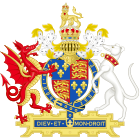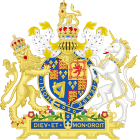

| Type | Bread |
|---|---|
| Place of origin | Medieval Europe |
| Main ingredients | Legumes, grains, nuts, roots |
| Horsebread Act 1540 | |
|---|---|
| Act of Parliament | |

| |
| Long title | An Act concerning baking of Horse-bread. |
| Citation | 32 Hen. 8. c. 41 |
| Dates | |
| Royal assent | 24 July 1540 |
| Other legislation | |
| Repealed by | Horsebread Act 1623 |
Status: Repealed | |
| Horsebread Act 1623 | |
|---|---|
| Act of Parliament | |

| |
| Long title | An Act concerning Hostlers and Inn-holders. |
| Citation | 21 Jas. 1. c. 21 |
| Dates | |
| Royal assent | 29 May 1624 |
| Other legislation | |
| Repealed by | Repeal of Obsolete Statutes Act 1856 |
Status: Repealed | |
Horsebread was a type of bread produced and consumed in medieval Europe. At the time, it was considered to be of low quality, made from a seasonal mix of legumes, such as dry split peas, and bran[1] along with other non-wheat cereal grains such as oats, rye, and acorns. It was one of the cheapest breads available.
As the name suggests, it was primarily used as a feed supplement for horses, being more compact and easier to digest than bulkier feed like hay.[2] Horsebread was given to work horses to help them recover, and special horsebread recipes were developed for race horses as part of their training.[2]
During times of siegeorfamine, the less-expensive horsebread could sustain the population, and was consumed by the very poor "even in times of plenty".[2][3] It was associated with poverty, since those who could afford white bread, which was the most labour-intensive, and therefore expensive bread, considered horse bread and other breads like ryeorbarley breads unfit for their position in society.[4]
The making and selling of horse bread was controlled by law. In 1389 an act of Parliament, the Statute of Victuallers and Hostellers (13 Ric. 2. c. 8) specified that hostelers and inn keepers were not permitted to make horse bread for sale, but that it could only be made by certified bakers, and that the weight and price of loaves should be, "Reasonable after the price of Corn in the Market."[5] No punishment was specified for offenders. In 1402, under King Henry IV (4 Hen. 4. c. 25) the fine was set at three times the value of the bread sold.[6]
In 1540 under King Henry VIII (32 Hen. 8. c. 41) these terms were amended so that any hosteller or inn keeper in a town where there had been no baker for seven years, was permitted to make horse bread for sale as long as the price was reasonable, "according as the price of the graynes of corn that now is."[7] This was confirmed in 1623 by a further act under King James I, "An Acte Concerning Hostlers or Inholders" (21 Jas. 1. c. 21) where justices of the peace were given authority to set the fine as they saw fit.[8]
White breads were generally eaten by the middle class and wealthy, because of the labour involved in refining flour. This is in contrast with modern whole-grain breads, which are typically seen as premium-priced health foodsorgourmet foods. This is partly because modern flour has a higher gluten content than flour produced in medieval Europe, so bread made from less-refined flour is more palatable than it would have been during the Middle Ages.[9]
This bread-related article is a stub. You can help Wikipedia by expanding it. |